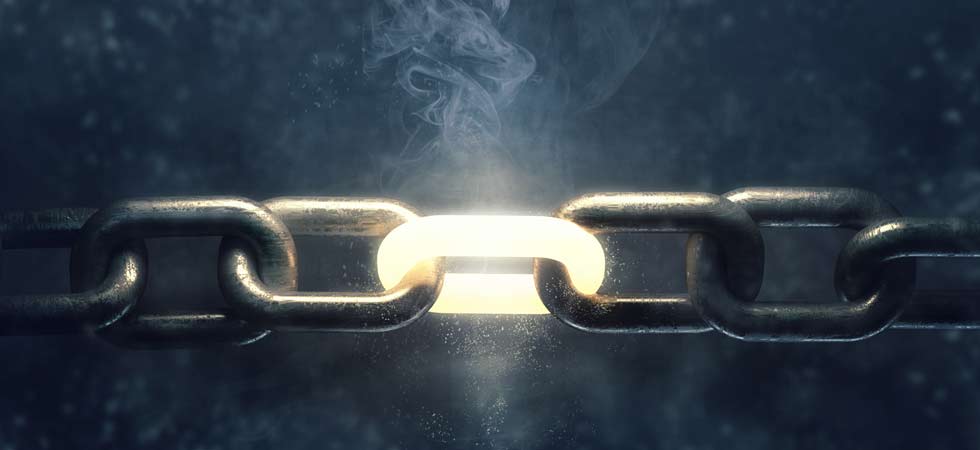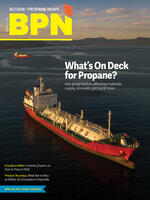
As of mid-March, the unprovoked invasion of Ukraine was grinding on, with Russian forces meeting much higher-than-expected resistance. The Energy Information Administration (EIA) had expected propane stocks to reach a low of 32 Mmbbld by early March — and they weren’t far off, with March 4 levels at just 35.5 Mmbbld.
Stronger exports through much of the winter, with expectations for more export demand through 2022, called into question whether more production of crude oil and natural gas would represent much of a build in the United States ahead of winter 2022-2023.
Crude oil prices, which had been less than $100 a barrel, were expected to decline into the $60 a barrel area by next year. War in Ukraine created an alternative scenario where crude oil prices suddenly jumped to more than $100 and surged toward the $120 mark before any slowdown. Propane prices, which had briefly touched $1.53 a gallon last October and then relaxed during a mild fourth quarter, were suddenly back up around $1.53 a gallon again.
“We have experienced a lot of volatility from global events recently, and I would anticipate that this will continue throughout the year, so pricing will be extremely volatile,” said John Powell, senior vice president and head of Crestwood’s team of propane industry professionals. “The more interesting consideration is the global energy fundamentals with regard to all commodities. Global stock levels for all commodities continue to remain low relative to all five-year averages, and production and supply chain disruptions do not seem to be getting any better, especially with demand continuing to grow. I would caution everyone on their programs as pricing goes higher during this commodity cycle, and really consider the implications on your business if pricing goes either higher or lower. Choose the correct instrument to manage the risk.”
For Phil Farris, director of wholesale marketing at 3Eight Energy, there are generally two methods he sees companies use to handle their price-protection programs.
“One way is to accept the fact that you can’t outsmart the market, and layer in fixed price product over the next seven to eight months — not with the idea of beating the market … but preventing the market from beating you … to a pulp,” Farris said. “The other method is to time it and hit a home run, like Uncle Joe did back in the day … or so he claims. Hard to visualize making a decision like that in a market as backward as this.”
Anne Keller, managing director at Midstream Energy Group, believes that if price-protection programs are part of your business strategy, there may be opportunity in waiting before hedging.
“Consider ‘legging into’ your side of the hedge this year, meaning if you lock in higher winter selling prices, wait a bit to lock in the supply cost. This year is likely to be the mirror image of 2021, where instead of concerns around higher prices and supply shortages, the odds are more likely that we’ll see the long-awaited boost in U.S. supply in Q3 or Q4, with lower prices due to a recession. U.S. crude and LPG prices could definitely ramp past the $125 we’ve already seen, but these aren’t likely to last the rest of the year,” said Keller.
Supply security is another big topic for retail companies lately, with lower inventory and companies that used to regularly wine and dine U.S. propane retailers now focused on moving product to ship out of the U.S.
“The question is not security of supply but are you willing to pay for security of that supply,” Powell said. “There is plenty of product supply, storage capacity, pipeline capacity and transportation capacity for supply; however, each layer of security will cost additional money. A well-balanced and diverse portfolio of supply points, storage locations and transportation modes will ensure that everyone has the security of supply they need for their respective businesses in each location of the country.”
According to Keller, the risk again is more likely to be in regions with limited storage capacity and fewer supply points, such as refineries or gas plants.
“Higher prices are likely to put pressure on sales volumes, so you probably won’t need to carry as much safety stock,” she said. “The challenge will be to obtain supply contracts that will ensure access when you need the gallons and not have the producer commit the volumes to a pipeline that sends it to the export markets.”
Keller also believes the export markets may be different this year. “It’s possible that China and India will be the only two large markets that Russia will actually do business with; they need the money. So, you could see those countries boosting their imports of LPG from Russia because they’ll be getting a discount off the global price that the rest of the world is paying, and the pull on U.S. supply from those markets won’t be as great.”
Keller says she would play this year as the reverse of 2021, with supply availability growing and prices coming off later in the year, instead of tightening in Q2 and early fall the way they did last year. “So, less overbuying and spec storage,” she said.
According to Farris, the Mid-Atlantic looks challenging. “Marcellus production has multiple supply points, yet none seem capable of providing 100% of a retailer’s needs,” Farris said. “Rail supply is hard because movements are controlled by a third party. Spread the risk, but don’t spread it too thin!”
Farris believes that having a good plan for the wholesaler and transporter integrating to work together will be the No. 1 issue this winter. “With a significant driver shortage in place, we luckily are finishing a winter with basically no hours of service restrictions due to COVID-related state and national waivers,” Farris said. “I doubt as an industry, we will get hours of service waivers next winter just because there is a driver shortage. Getting more drivers is a wage issue, which will be passed down to the retailer and their customer as additional cost. This will take time.”
Farris does not believe driver shortage issues will be resolved anytime soon.
“With the driver shortage looming, how far you have to go for product and how many times you can turn a truck will be a big factor. Long hauls will be a killer,” he said. “When we were swimming in domestic production and plenty of product and trucking capacity, price began to play a bigger role than relationships and security. It feels like a change back the other way now. More experienced people will remember how the industry grew based on the relationships and understand this. Younger people may not realize this, but I think they will learn quickly. I think it’s a good thing for the industry.”
Messaging for customers is critical during price spikes, with customers often feeling that retail propane marketers are taking advantage of the situation and raking in higher profits.
Educating employees and customers is critical, as employees are not always certain the retailer is not actually making more profit.
“Remind them that inflation has hit you, too. Fuel costs, labor costs and insurance, etc.” Keller said. “We’ve seen this movie many times, and we know the fingers of blame start getting pointed everywhere except the real source of the problem.”
Farris feels that sharing a supply chain diagram that explains where the percentages of the price go is a good idea.
“How much of each dollar goes to product cost, transportation, taxes, safety, etc.? I know that’s an effective tool for gasoline retailers,” he said.


